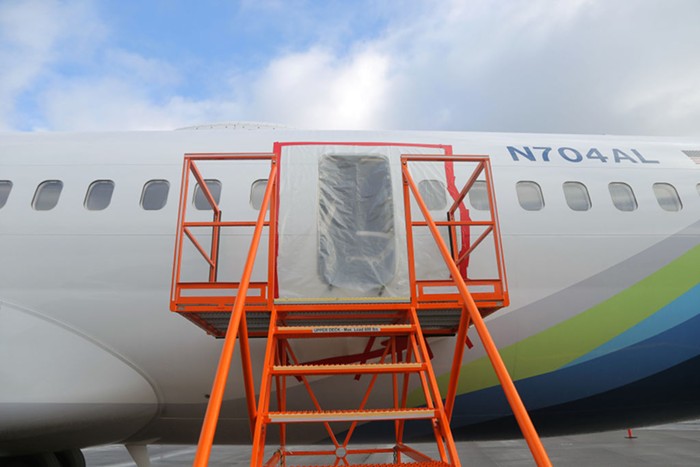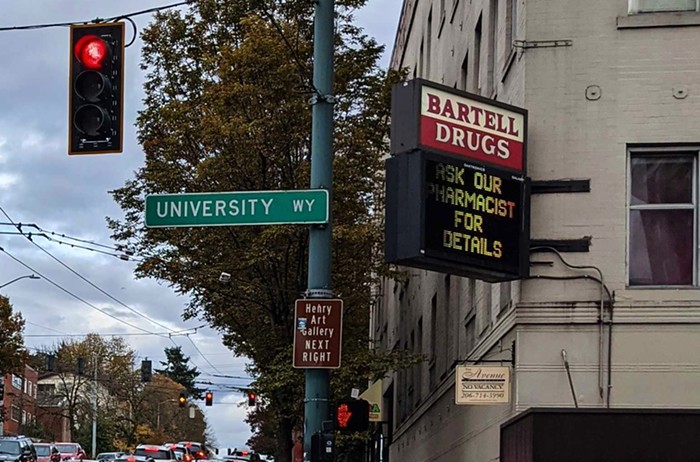
When Boeing announced yet another round of job cuts, and not just any old cuts, but cuts to technical and engineering jobs, Dominic Gates of the Seattle Times explained the situation exactly the way Boeing executives wanted it explained. It was a matter of remaining competitive in a harsh "business environment." And not only that, but "'fewer sales opportunities and tough competition' would drive further cuts in 2017."
At the opening of the story, Gates wastes no time pointing out that no cuts are happening at Boeing's South Carolina plants. What he is really saying by this is: Unions are the real the problem here. Their demands are unrealistic, considering the harsh "business environment." But the workers in South Carolina, who recently voted not to unionize, are far more realistic about the business environment—they also believe that having a job is more important than having lots of benefits and cash (bosses really get hard when workers have this understanding, hands down). The realism of labor is finally in harmony with the realism of capital.
But, of course, all this talk about competition and "sales opportunities" is complete nonsense, if you add an important factor that is completely missing in Gates's post but is indeed found in the Everett Herald's account of the current round of layoffs. It is buybacks. But what is this we are now talking about? And how does it have anything to do with making planes and profits? What we must always keep in mind during these times is this: Any explanation of a business environment or market (real estate, for example) that excludes finance (equity markets, bond markets, investment banks, interest rates, and the like) provides you as much useful information as the sight of a bear extinguishing a burning itch by rubbing its back on the bark of a tree.
Buybacks are as real as the clap. And they represent, to use the words of Bill Lazonick—a real economist (meaning, he considers history and politics in his economic picture and theories)—the current model for big business in the US: downsize and distribute. A buyback is basically a company using its own money to purchase its own shares; this then reduces the number of the company's shares on the stock market and, as a consequence, increases the price of the remaining shares. This increase in effect transfers money from the company to the shareholders.
As always, the business of buybacks began small. And the way shareholders mostly made money was through dividends—sharing of profits, if there were profits. These days, buybacks account for 54 percent of income for shareholders in the S&P 500. Back in the day (2000), companies annually spent $300 million on buybacks; now it is $4 trillion. Buybacks are the crack of corporate America. In the way a crackhead could use the dollars in his or her pocket to look for work or pay for a trip to school, the money used in buybacks might have been used for R&D or maintaining a happy, loyal and healthy workforce.
Read this vivid account of the steps leading to Boeing's next big buyback (the plans for which were being made at the end of 2016), and please keep in mind this fact: between 2013 and 2016, Boeing had already spent an astounding $19 billion on buybacks:
Boeing management thinks its stock is cheap and last week announced plans to buy back $14 billion worth of its own stock — roughly 15% of all shares outstanding. Can Boeing pay? Boeing cannot afford to buy back $14 billion worth of stock immediately. But despite its size, given enough time, this buyback is definitely within Boeing's reach. According to S&P Global Market Intelligence, Boeing already has $9.6 billion in cash and short-term investments on its books. Granted, some of this money is needed to fund the company's ongoing operations. Granted, too, it's not entirely unencumbered cash — Boeing also carries $9.8 billion in long-term debt.What does this have to do with making and selling airplanes? Nothing. And so any theory or explanation of value creation (as stated by the executives and parroted by Seattle Times) is worthless. What is needed is a theory of value extraction.But S&P Global data shows Boeing generating $8.15 billion in free cash flow annually. That money, combined with what Boeing already has in the bank, should suffice to fund the company's entire $14 billion buyback in less than a year — should Boeing decide to proceed with it.

















